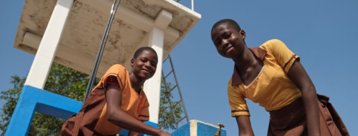
Climate Education and Justice: Why We Can't Separate Gender, Youth, and Climate
Whenever we talk about climate change, we often picture graphs, CO₂ emissions, and global policies. But in practice, the climate crisis doesn't affect everyone equally. Women and girls, especially in developing countries, face much more severe impacts. Therefore, it's impossible to think about climate education without also discussing gender and social justice.
During my performance in Girl Programme Fellowship do Malala Fund, I had the opportunity to work with young women from different parts of the world, exploring precisely this intersection between climate and gender. In one of the modules we developed, we discussed how the effects of the climate crisis fall disproportionately on girls: in droughts, for example, they spend hours collecting water; in environmental disasters, they are more exposed to gender-based violence; in contexts of economic crisis, they end up being forced to drop out of school or marry early. In other words, climate change is not neutral—it exacerbates existing inequalities.
From this perspective, education takes on a transformative role. While girls suffer more from the impacts of the crisis, they are also fundamental agents of change when they have access to education and occupy decision-making positions. In practice, this means that investing in girls' education is not only a human rights issue, but also one of the most effective climate adaptation and mitigation strategies. Studies already demonstrate that communities where women have greater participation in decision-making processes tend to adopt fairer and more sustainable environmental measures.
At the Girl Programme, we seek to translate these discussions into concrete experiences. Alongside other educators, I designed and implemented training that went beyond theory. We created spaces for exchange where participants could connect science, global policies, and their local realities. We discussed everything from the Paris Agreement to the everyday impacts of water scarcity and crop failure, always asking: how does this affect girls and women in our communities? This perspective brought to the forefront something that is often silenced: the climate crisis is not just environmental, but also social, cultural, and gender-based.
What I learned from these experiences is that Climate Education must also be an Education for Justice. We need to prepare young people to understand the structural roots of inequalities, name invisible forms of violence, and create tools to transform this reality. Only then can we develop leaders who not only combat carbon emissions but also confront the historical injustices that sustain the unequal climate system in which we live.
Bringing together gender, youth, and climate is not an option, it's a necessity. When we strengthen the education of girls and young women, we pave the way for a more just, inclusive, and transformative climate response.